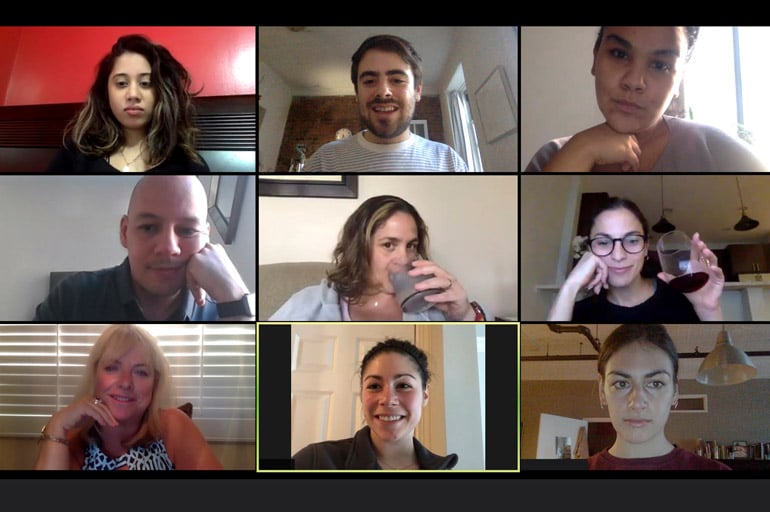With much of the nation’s workforce in isolation for more than a year due to virus restrictions, millions of workers adjusted to working from their homes, holding meetings on Zoom calls, and checking in with their colleagues by phone or text.
That left a conundrum for office building owners and facilities managers who were used to having their spaces filled with bustling workers. Many decided simply to shut down their facilities. Some kept their buildings open with operations running at full capacity due to lease requirements or new air quality guidelines related to the pandemic. Hardly economical.
Throughout the pandemic, there were numerous employers that needed their workers to continue physically coming to work due to the essential services they provided. At Veolia North America, for example, more than 90 percent of employees for the company’s Municipal Water division did not have the option to work from home. They needed to operate and maintain essential drinking water and wastewater systems for hundreds of towns and cities.
But now there are encouraging signs that non-essential employees are gradually returning to the office as pandemic restrictions begin to lift, giving facilities managers reason to hope that things might get back to the way they were before. They are discovering, however, that the repercussions from the virus will continue to be felt for years to come.

For employers whose services were not considered essential by public health agencies, a return to full capacity at large buildings and office spaces may still be a ways off. For many office building owners and managers, it’s going to be a new normal.
Enter the hybrid workplace
Instead of bringing all employees back into the office on a full-time basis, many employers are implementing a hybrid workplace structure in which employees work some days at home and some days in the office. The hybrid workplace model combines remote work with office work so that employees are neither exclusively working from home nor working at the office full-time.
The model attempts to walk the line between the desire of employees to return to the office and work side-by-side with their colleagues, and concerns about commuting and being exposed to lingering elements of the virus. There are pros and cons to this approach:
Pros
- Increased flexibility
- Reduced carbon footprint
- Labor-cost optimization
- Increased employee satisfaction
Cons
- Disrupting relationships
- Impeding effective collaboration
- Reducing performance
- Reducing cultural socialization
There is a growing debate over how long this hybrid approach will last — and how many days a week workers should remain at home. But there’s no doubt that the hybrid concept is forcing facilities managers to change their thinking on the best way to operate their properties efficiently and effectively.
Keeping the power on — but in a smart way
With more workers heading back to their workspaces, owners and managers need to figure out the best way to provide basic energy needs for their tenants and clients.

Before the pandemic, that issue was addressed primarily by opening the entire building to essential needs like ventilation and lighting. With a goal of full occupancy, owners and managers kept the power running in every corner of the building while looking to identify areas where they could maximize cost-savings and reduce inefficiencies such as disconnected venting or faulty power circuits.
Now owners and managers are adjusting to operating buildings that are only partially full at any given time. That means there may be large sections of their buildings where power is being supplied to empty rooms and spaces.
The solution? Sub-metering and energy management platforms
While the future of the traditional workplace is still uncertain, office building owners and property managers are recognizing that energy savings and efficiency require a full understanding of where their energy resources are being used in a partially-filled building.
In other words, from an energy usage perspective, they need a comprehensive analysis of where their energy resources are being put to effective use, and where they are not. Even in buildings that are returning to full capacity, there will be a need to obtain a full picture of energy consumption in order to optimize efficiency.
Facilities managers are finding that the best way to do that is through a range of energy management platforms, with a heightened focus on sub-metering to get a detailed portrait of their property’s usage.
As opposed to traditional meter reading, which is used by power companies to get broad data on usage levels in a building or other property, sub-metering is meant to provide more detailed data to owners and managers in large properties, allowing them to more accurately identify areas where energy is not being consumed most efficiently.
Along with sub-metering, facilities managers can get a detailed, accurate portrait of energy usage in their properties through sophisticated energy management platforms in which advanced technology, combined with professional monitoring, identify areas where energy is not being optimized.
Many of these platforms employ sensors placed in the duct and ventilation systems inside the building, where they can reveal inefficiencies at even microscopic levels. Even though they may be small, these inefficiencies can accumulate throughout a large property, adding to energy consumption costs through increased utility bills.
A hybrid workplace for the future
Once facilities managers get the information they need to understand their level of usage, they can move to address inefficiencies and take other steps to enhance cost-savings.
With many buildings still only partially occupied, managers are finding it more efficient to cluster workspaces in certain sections of the building, directing ventilation and other energy needs to those areas and reducing output in areas that remain unoccupied.
These are some of the new realities for managers hoping to get the most out of their energy usage. Whether this new normal will be permanent remains to be seen, but a return to the way things were before the pandemic is not likely any time soon.



